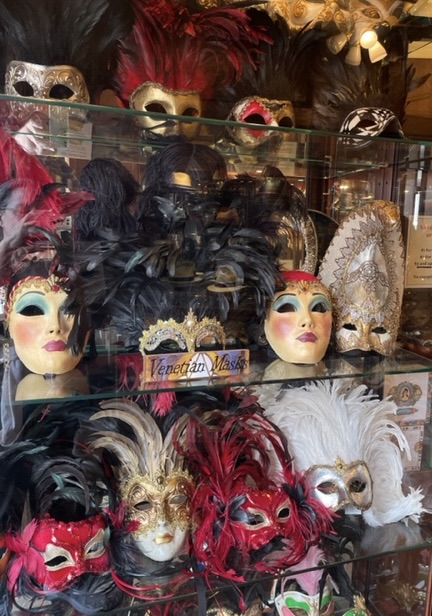No. 1: “Mira was hiding in the ladies’ room.”
The Women’s Room by Marilyn French
The second sentence of this novel reads: “She called it that, even though someone had scratched out the word ladies in the sign on the door, and written women’s underneath.” Between the first two sentences, the novel starts us out with some suspense (why is Mira hiding? From whom is she hiding? And why in the ladies’ room?), a strong dose of character (Mira is not a feminist–or, at minimum, not the kind who would correct the labeling of bathroom doors), and a strong sense of what the novel’s theme may be. It makes one curious about Mira and wanting to know more about her predicament, whatever it may turn out to be.
No. 2: “Many years later, as he faced the firing squad, Colonel Aureliano Buendia was to remember that distant afternoon when his father took him to discover ice.”
One Hundred Years of Solitude by Gabriel Garcia Marquez
That a man facing a firing squad should be thinking about his father taking him to discover ice rather than his imminent death is immediately intriguing. Farther along in that first paragraph, Marquez writes: “The world was so recent that many things lacked names, and in order to indicate them it was necessary to point.” Marquez is creating a place so isolated that they only learn of the world’s inventions through gypsies that come through once a year. Farther along in the chapter, he tells one of a villager who, based only on the items he obtains from the gypsies, takes both the scientific steps and missteps that the outside world took centuries to perform. (Eg. using a telescope to make astronomical discoveries, but also trying to turn lead into gold.)
No. 3: “I owe the discovery of Uqbar to the conjunction of a mirror and an encyclopedia.”
Tlon, Uqbar, Orbis, Tertius by Jorge Luis Borges
The conjunction of a mirror and an encyclopedia? The idea that a mirror and an encyclopedia together result in a discovery suggests an unusual juxtaposition of ideas and a narrator (and a writer) with an unusual way of looking at the world. And Uqbar? What is Uqbar? What was discovered?
No. 4: “I am an invisible man.”
Invisible Man by Ralph Ellison (prologue)
Ellison’s paragraph goes on to explain the kind of invisible he is: “…I am a man of substance, of flesh and bone, fiber and liquids–and I might even be said to possess a mind. I am invisible, understand, simply because people refuse to see me.” Before one knows anything more about the story, the idea of someone being invisible not through accident or by choice or even because people simply overlook him, but because they positively refuse to see him gives the character a sympathy, and the start of this novel an interest and a power.
No. 5: “Amoebae leave no fossils. They haven’t any bones. (No teeth, no belt buckles, no wedding rings.)”
Even Cowgirls Get the Blues by Tom Robbins
Okay. So I cheated with this one. Two short sentences and a parenthetical phrase. But, one has to admit, it is an intriguing, tongue-in-cheek beginning. Robbins is making a connection by contrast between amoebae and people, and one has to wonder, where is he going with this? To Wonder sufficiently to be amused and keep reading.
WHAT ALL THESE BEGINNINGS HAVE IN COMMON, perhaps the most important thing they have in common (beyond a quick and sure introduction of compelling characters and/or situations), is an intriguing idea. Something that suggests this writer’s way of looking at the world is different from what one commonly encounters, and that, if one reads on, that difference is going to make the work intellectually exciting.


